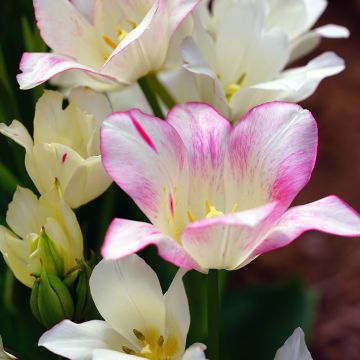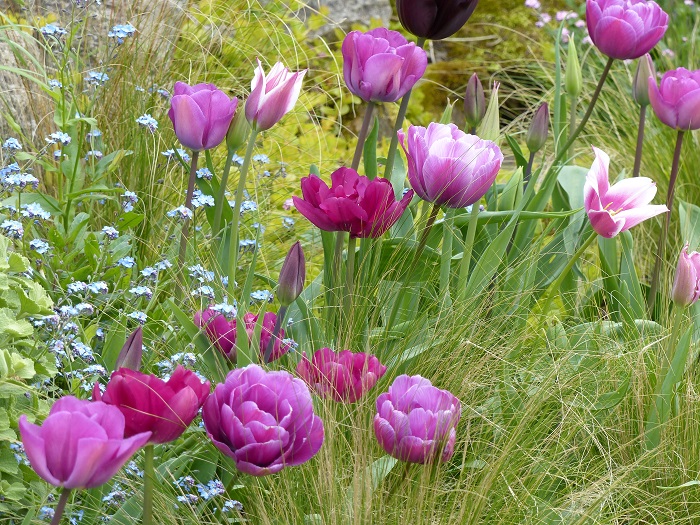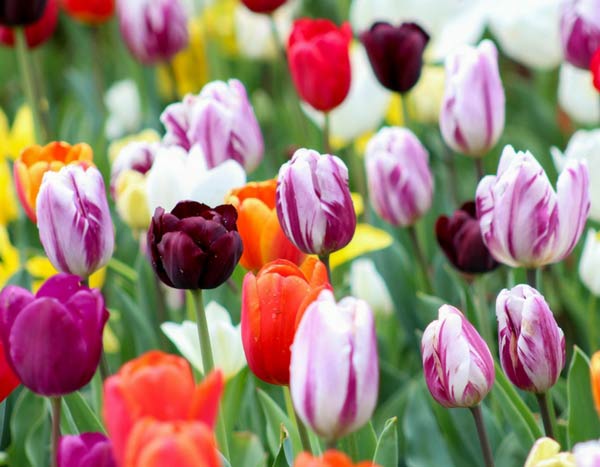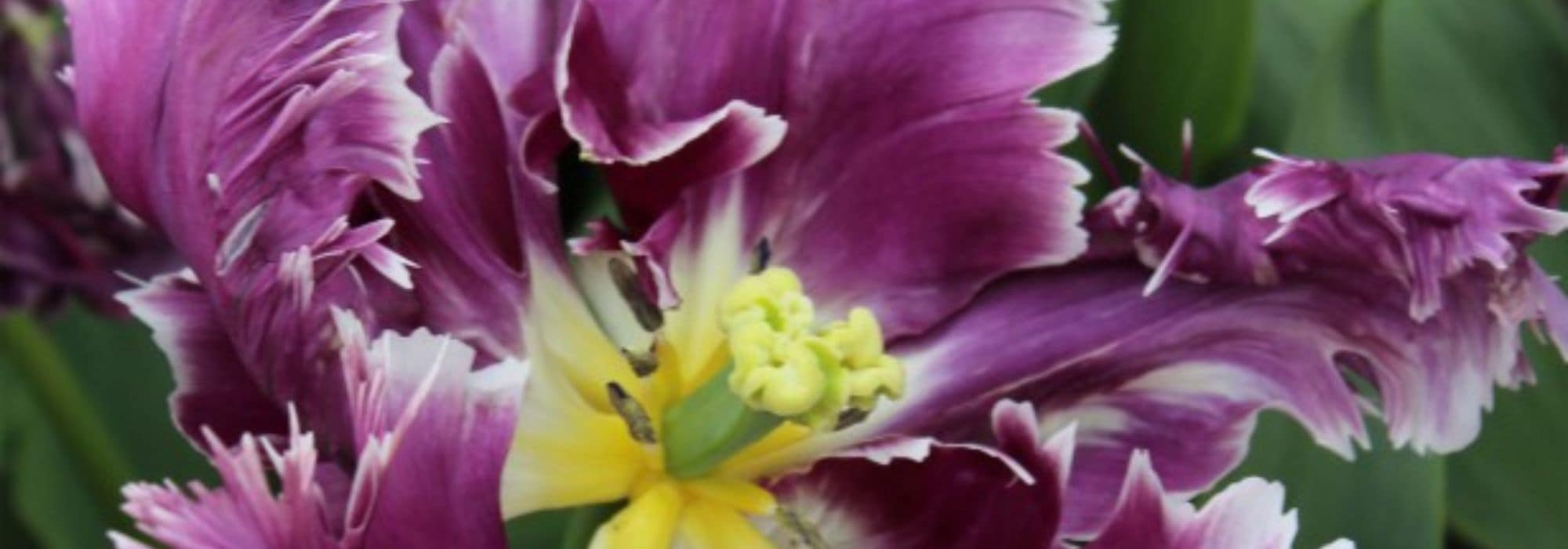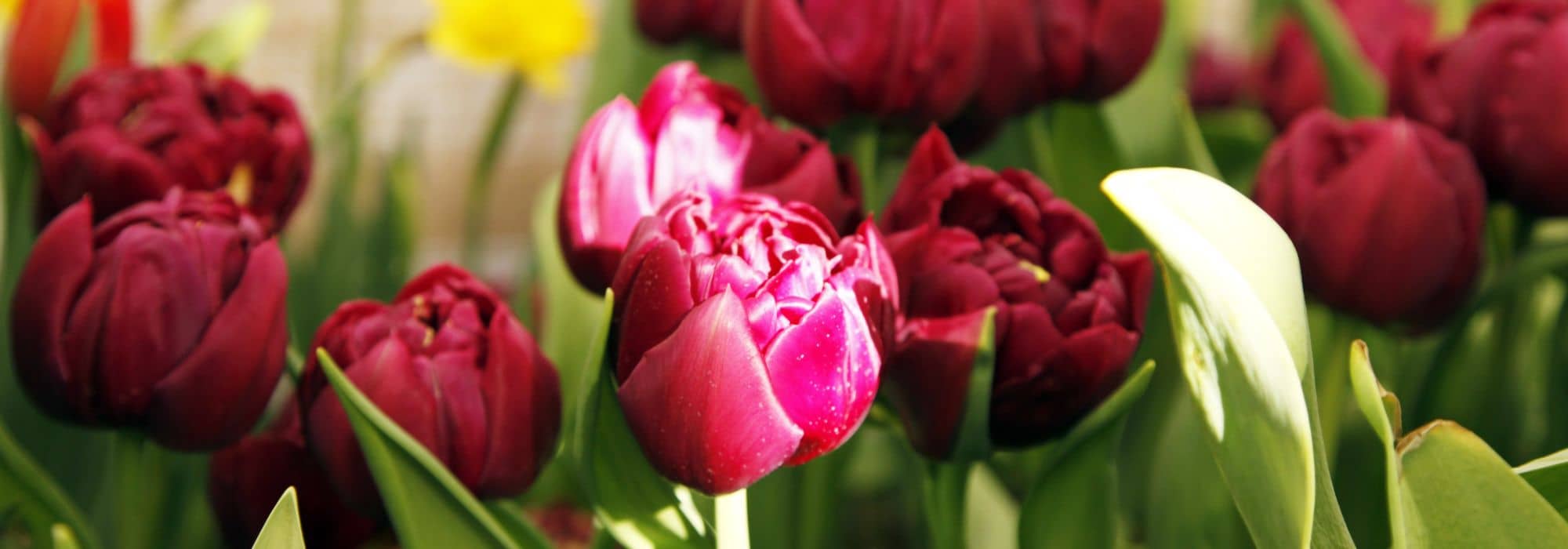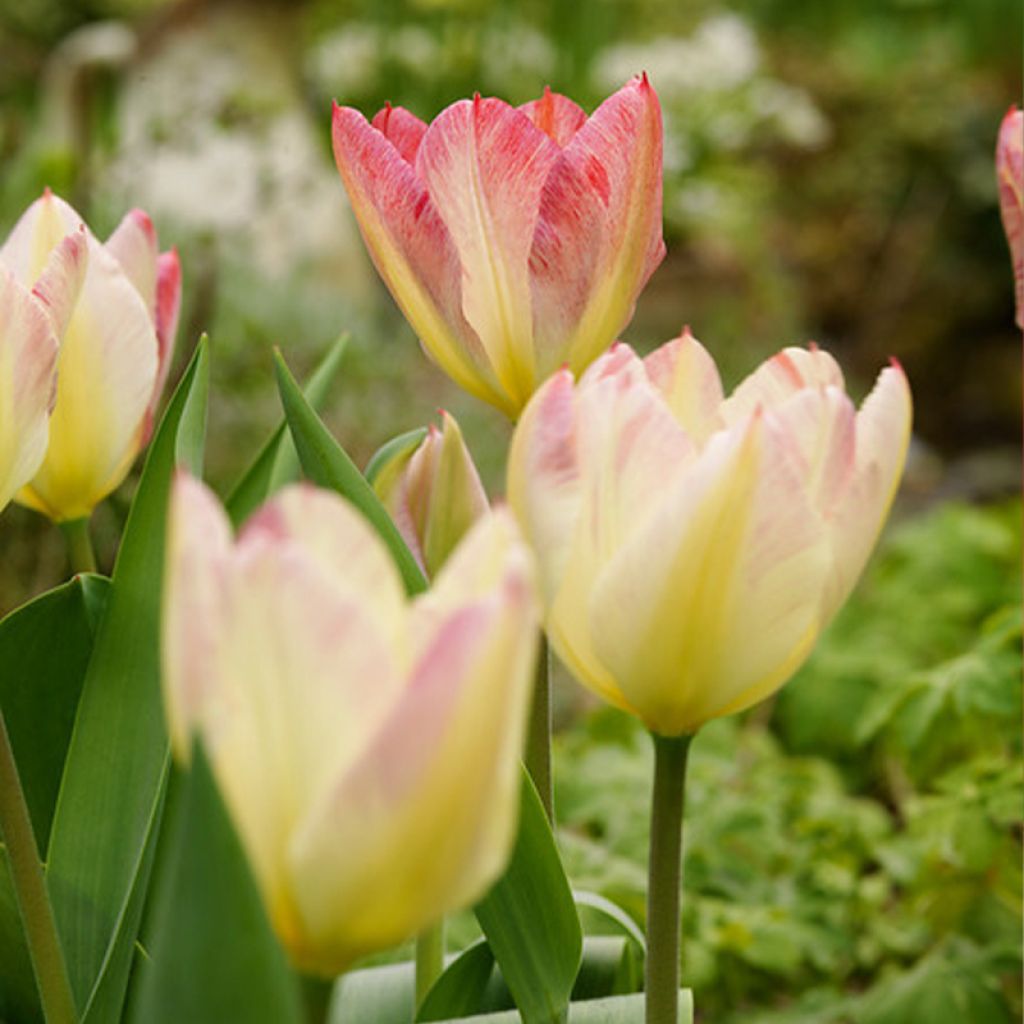

Tulipa 'Antoinette'
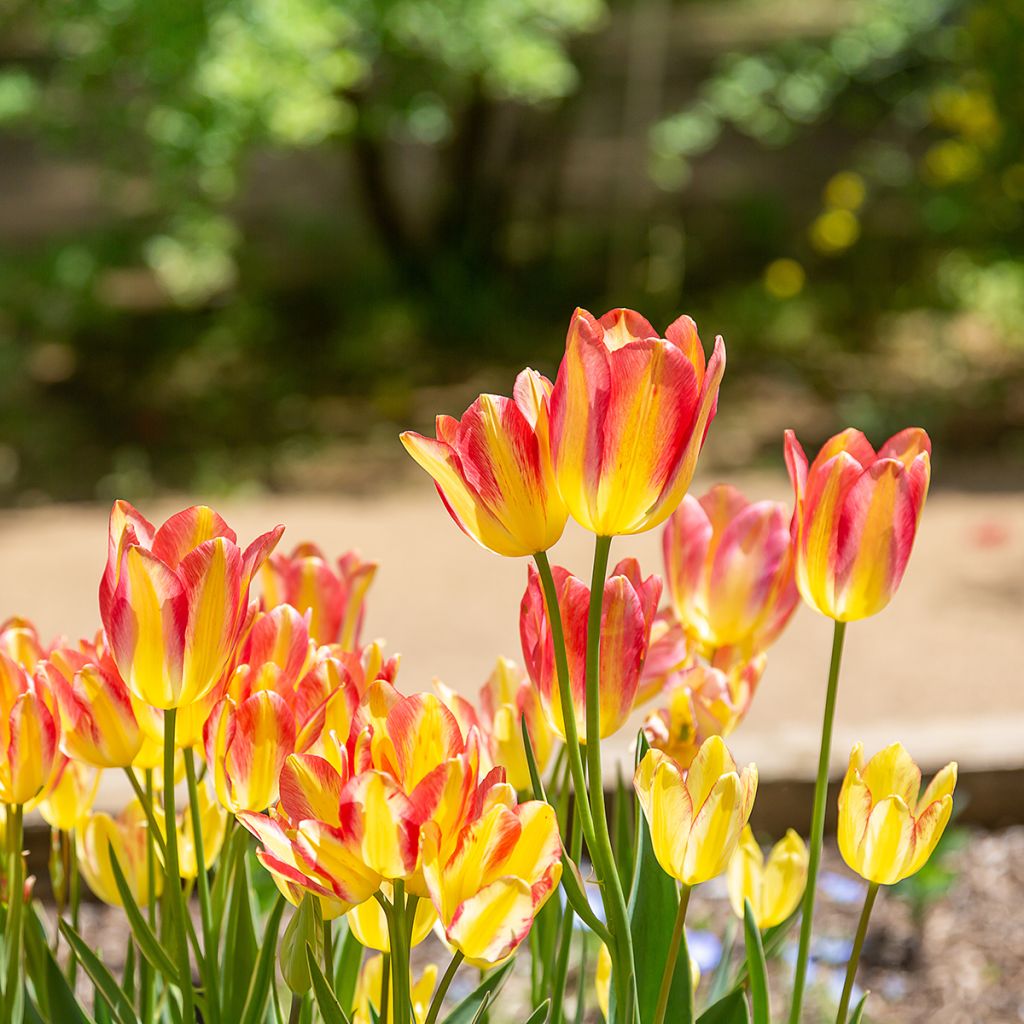

Tulipa 'Antoinette'
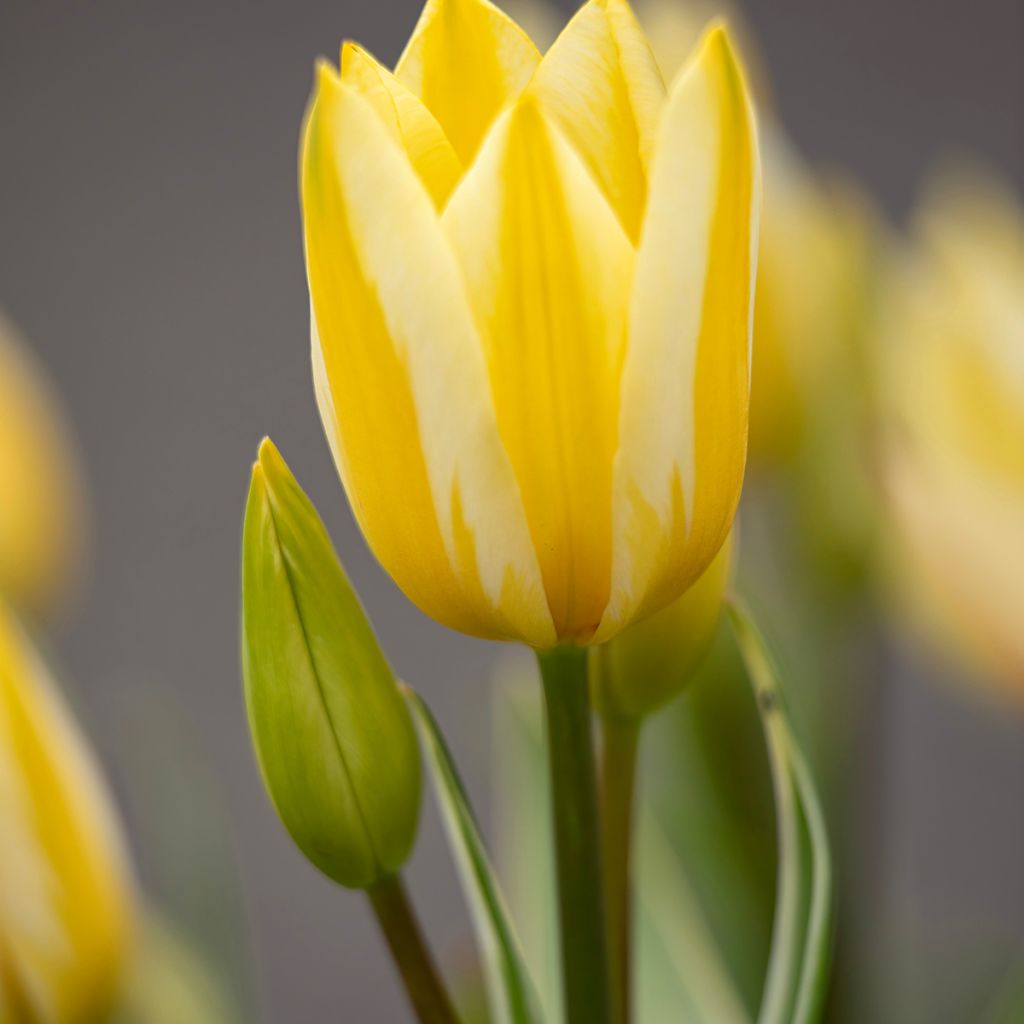

Tulipa 'Antoinette'
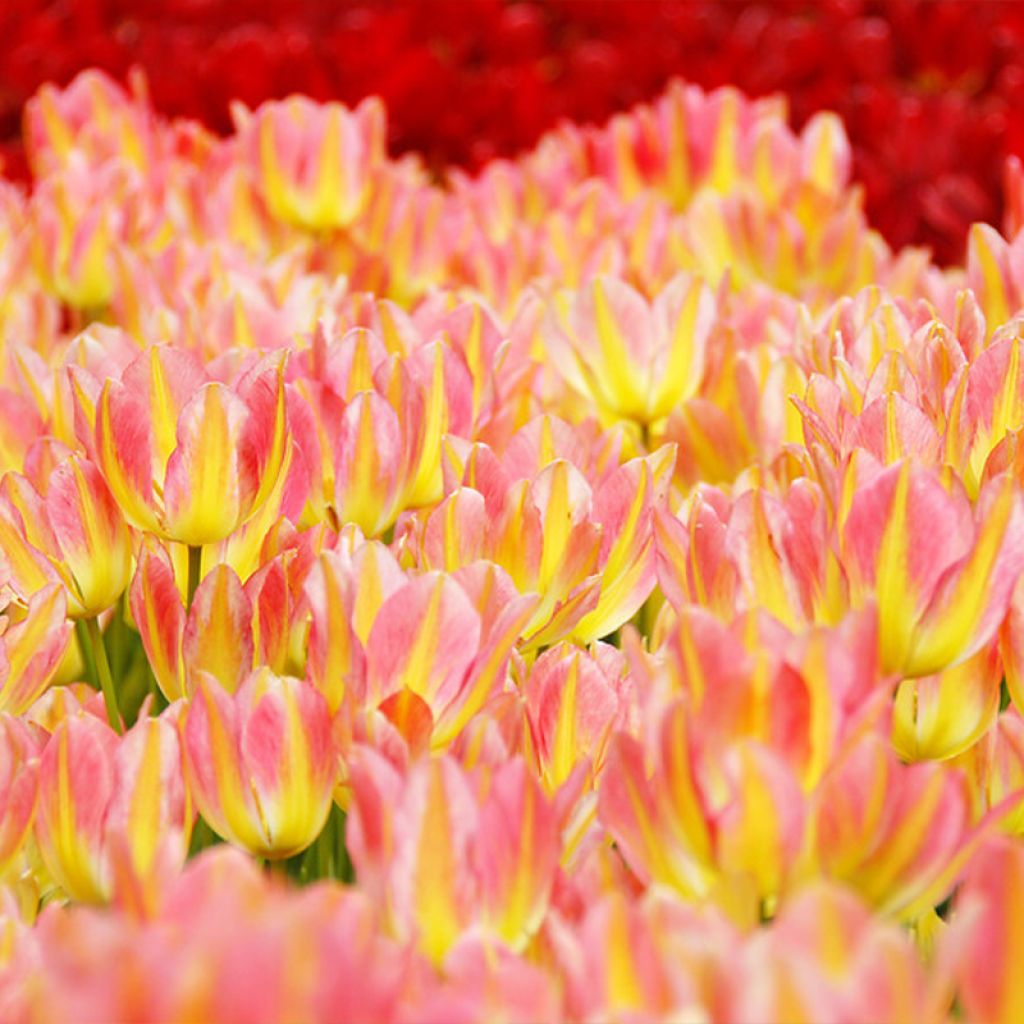

Tulipa 'Antoinette'
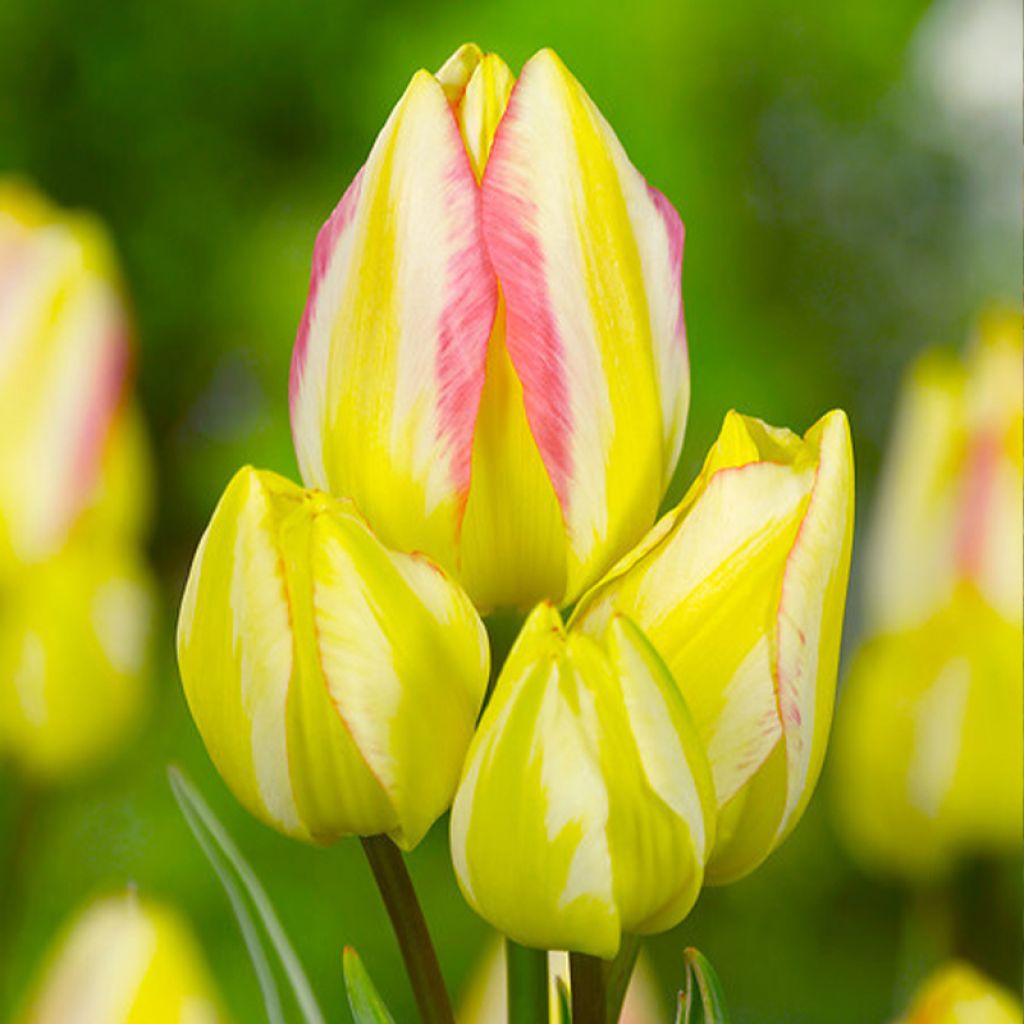

Tulipa 'Antoinette'


Tulipa 'Antoinette'
View more pictures
Hide images
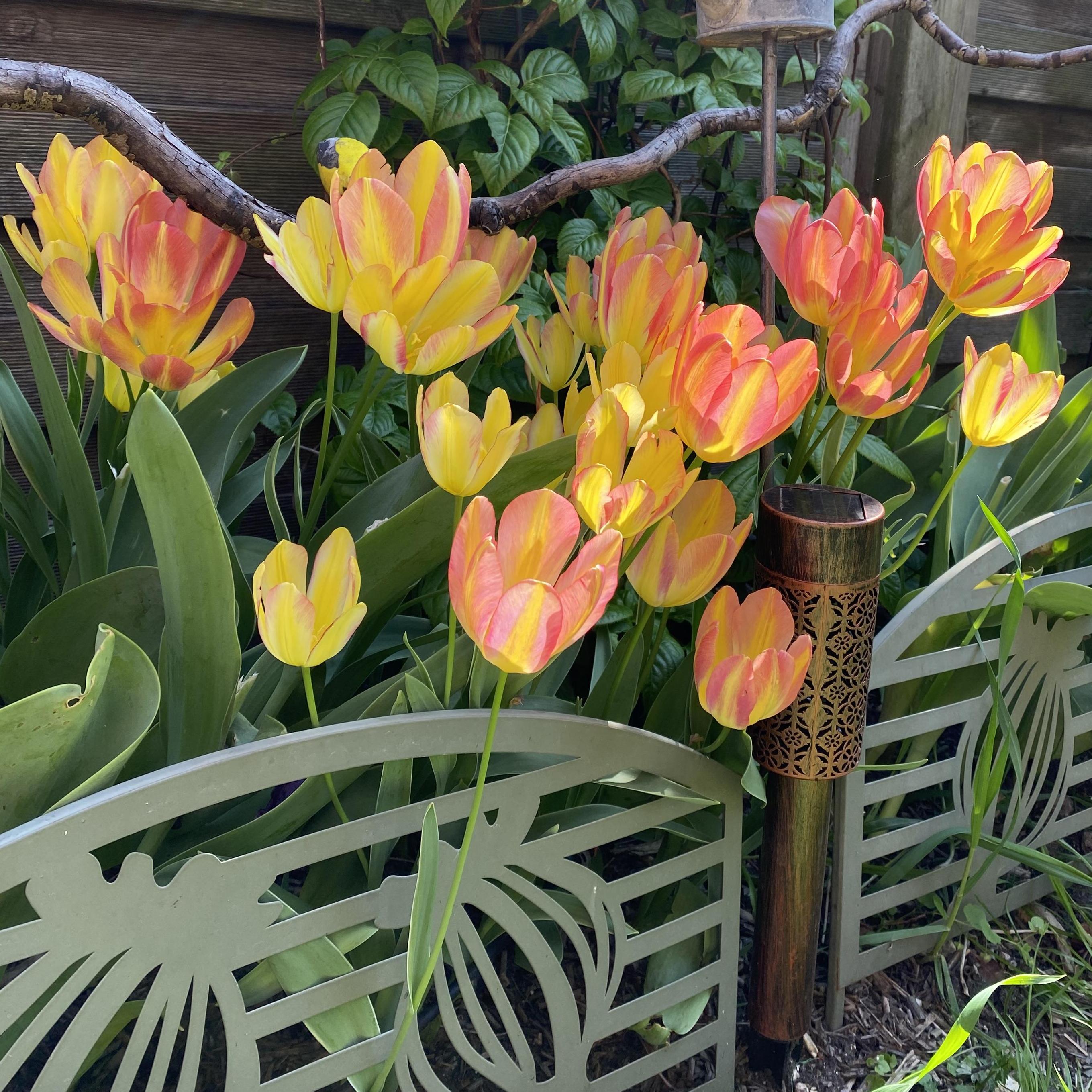
Isabelle A.

Isabelle A. • 95 FR
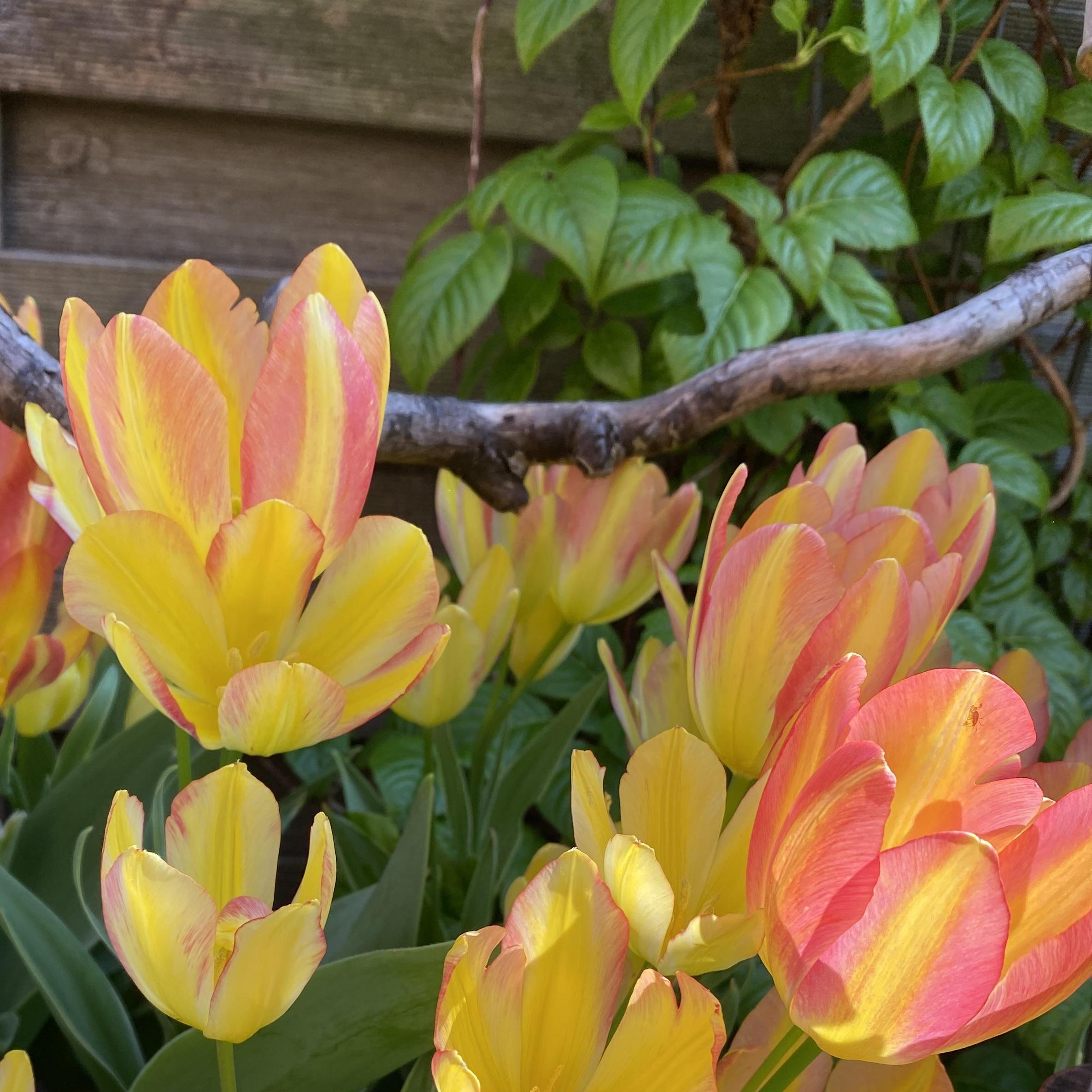
Isabelle A.

Isabelle A. • 95 FR
Tulipa 'Antoinette'
Tulipa Antoinette
Tulipe Groupe Pluriflore
Special offer!
Receive a €20 voucher for any order over €90 (excluding delivery costs, credit notes, and plastic-free options)!
1- Add your favorite plants to your cart.
2- Once you have reached €90, confirm your order (you can even choose the delivery date!).
3- As soon as your order is shipped, you will receive an email containing your voucher code, valid for 3 months (90 days).
Your voucher is unique and can only be used once, for any order with a minimum value of €20, excluding delivery costs.
Can be combined with other current offers, non-divisible and non-refundable.
This plant carries a 6 months recovery warranty
More information
We guarantee the quality of our plants for a full growing cycle, and will replace at our expense any plant that fails to recover under normal climatic and planting conditions.
Would this plant suit my garden?
Set up your Plantfit profile →
Description
Each bulb of the Multi-flowered Tulip 'Antoinette' produces 3 to 5 flowers that change colour throughout the day, which has earned it its other name, the 'Antoinette chameleon tulip'. The main stem branches out into secondary stems that bloom in a staggered manner, and each corolla transitions from greenish yellow to salmon orange, passing through creamy yellow with a touch of pink. Together, they create a multicoloured pastel bouquet. This tulip has a sturdy stem that can withstand inclement weather, and it blooms towards the end of the tulip season. It is quite different from the somewhat rigid stature and flashy appearance that some tulips display. Absolutely charming in borders, flower beds, and containers.
The 'Antoinette' Multi-flowered Tulip, registered in 1996 in the Netherlands, belongs to the lily family. Of horticultural origin, multi-flowered tulips can belong to various groups, including Triumph or late single varieties, for example. Their main characteristic is a branched flower stem that gives rise to several smaller flowers, with the flowering also more staggered over time. Perched on 45cm (18in) stems, well above the broadly lanceolate leaves, the elegant flowers are all different. Initially in the shape of a narrow cup, they open up into wide corollas. The flowers change colour over time, turning salmon pink before wilting. The flowering takes place in May and splendidly concludes the tulip season.
The 'Antoinette' Multi-flowered Tulip finds its place in all sunny flower beds and borders. Its charm allows for beautiful combinations with daffodils, grape hyacinths, hyacinths, and other tulips such as the Multi-flowered Tulip 'Flaming Club', the 'Toronto' , or the 'Queen of Night' Tulip. Pair it with Corsican hellebores, lady's mantle, and Euphorbias for stunning scenes. It is perfect in flower beds as well as in pots and containers. This tulip also beautifies balconies and terraces. It pairs perfectly with tall perennials like peonies and is ideal for creating charming bouquets. When using it in a vase, use very little water, just a small amount is enough! Additionally, if your tulips open too quickly, you can add two to three ice cubes to the vase each day.
Tulipa 'Antoinette' in pictures
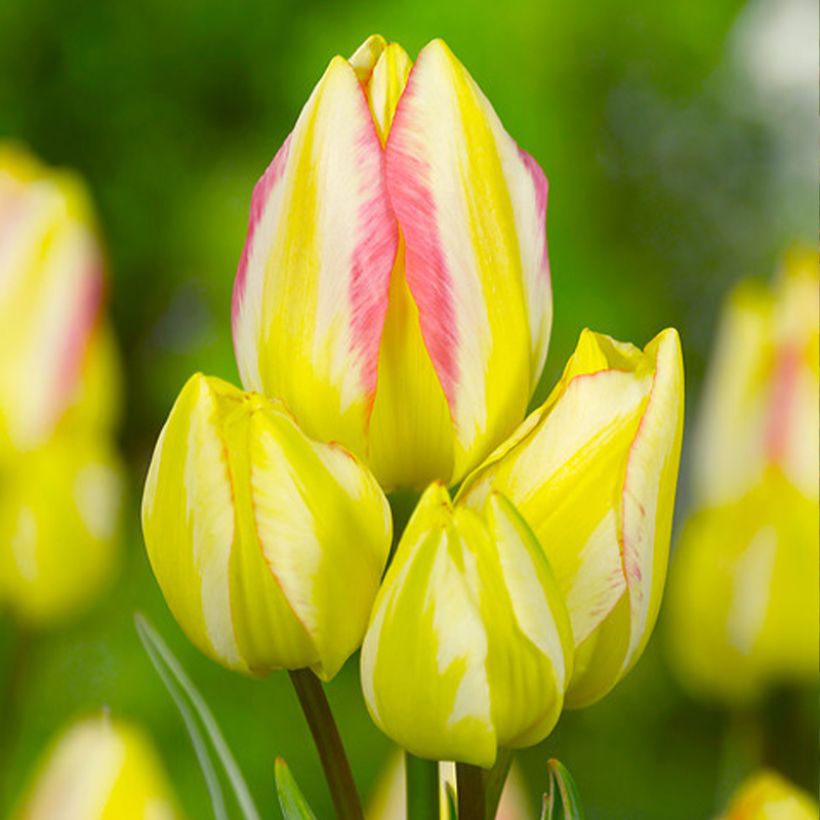

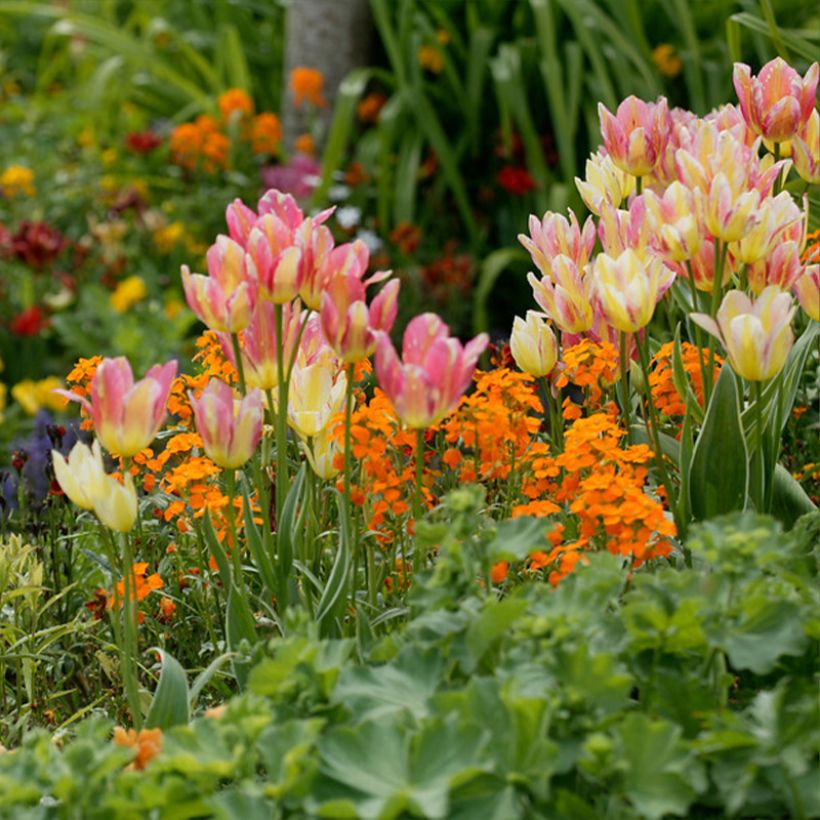

Plant habit
Flowering
Foliage
Botanical data
Tulipa
Antoinette
Liliaceae
Tulipe Groupe Pluriflore
Cultivar or hybrid
Other Multiple flowering / Multi-headed Tulips
View all →Planting and care
Plant the bulbs in autumn, from September to December, at a depth of 15cm (6in), spacing them 10cm (4in) apart. The planting should be done in regular soil, slightly acidic, neutral, or slightly alkaline, loose, well-worked, and well-drained. Never add manure or poorly composted compost to the planting soil, as this could cause the bulbs to rot. The 'Antoinette' tulip will grow well in moist to dry soil in summer. Plant it in a sunny or partially shaded location. Once flowering is complete, it is best to remove the fruits to prevent the plant from becoming exhausted.
Planting period
Intended location
Care
Planting & care advice
This item has not been reviewed yet - be the first to leave a review about it.
Haven't found what you were looking for?
Hardiness is the lowest winter temperature a plant can endure without suffering serious damage or even dying. However, hardiness is affected by location (a sheltered area, such as a patio), protection (winter cover) and soil type (hardiness is improved by well-drained soil).

Photo Sharing Terms & Conditions
In order to encourage gardeners to interact and share their experiences, Promesse de fleurs offers various media enabling content to be uploaded onto its Site - in particular via the ‘Photo sharing’ module.
The User agrees to refrain from:
- Posting any content that is illegal, prejudicial, insulting, racist, inciteful to hatred, revisionist, contrary to public decency, that infringes on privacy or on the privacy rights of third parties, in particular the publicity rights of persons and goods, intellectual property rights, or the right to privacy.
- Submitting content on behalf of a third party;
- Impersonate the identity of a third party and/or publish any personal information about a third party;
In general, the User undertakes to refrain from any unethical behaviour.
All Content (in particular text, comments, files, images, photos, videos, creative works, etc.), which may be subject to property or intellectual property rights, image or other private rights, shall remain the property of the User, subject to the limited rights granted by the terms of the licence granted by Promesse de fleurs as stated below. Users are at liberty to publish or not to publish such Content on the Site, notably via the ‘Photo Sharing’ facility, and accept that this Content shall be made public and freely accessible, notably on the Internet.
Users further acknowledge, undertake to have ,and guarantee that they hold all necessary rights and permissions to publish such material on the Site, in particular with regard to the legislation in force pertaining to any privacy, property, intellectual property, image, or contractual rights, or rights of any other nature. By publishing such Content on the Site, Users acknowledge accepting full liability as publishers of the Content within the meaning of the law, and grant Promesse de fleurs, free of charge, an inclusive, worldwide licence for the said Content for the entire duration of its publication, including all reproduction, representation, up/downloading, displaying, performing, transmission, and storage rights.
Users also grant permission for their name to be linked to the Content and accept that this link may not always be made available.
By engaging in posting material, Users consent to their Content becoming automatically accessible on the Internet, in particular on other sites and/or blogs and/or web pages of the Promesse de fleurs site, including in particular social pages and the Promesse de fleurs catalogue.
Users may secure the removal of entrusted content free of charge by issuing a simple request via our contact form.
The flowering period indicated on our website applies to countries and regions located in USDA zone 8 (France, the United Kingdom, Ireland, the Netherlands, etc.)
It will vary according to where you live:
- In zones 9 to 10 (Italy, Spain, Greece, etc.), flowering will occur about 2 to 4 weeks earlier.
- In zones 6 to 7 (Germany, Poland, Slovenia, and lower mountainous regions), flowering will be delayed by 2 to 3 weeks.
- In zone 5 (Central Europe, Scandinavia), blooming will be delayed by 3 to 5 weeks.
In temperate climates, pruning of spring-flowering shrubs (forsythia, spireas, etc.) should be done just after flowering.
Pruning of summer-flowering shrubs (Indian Lilac, Perovskia, etc.) can be done in winter or spring.
In cold regions as well as with frost-sensitive plants, avoid pruning too early when severe frosts may still occur.
The planting period indicated on our website applies to countries and regions located in USDA zone 8 (France, United Kingdom, Ireland, Netherlands).
It will vary according to where you live:
- In Mediterranean zones (Marseille, Madrid, Milan, etc.), autumn and winter are the best planting periods.
- In continental zones (Strasbourg, Munich, Vienna, etc.), delay planting by 2 to 3 weeks in spring and bring it forward by 2 to 4 weeks in autumn.
- In mountainous regions (the Alps, Pyrenees, Carpathians, etc.), it is best to plant in late spring (May-June) or late summer (August-September).
The harvesting period indicated on our website applies to countries and regions in USDA zone 8 (France, England, Ireland, the Netherlands).
In colder areas (Scandinavia, Poland, Austria...) fruit and vegetable harvests are likely to be delayed by 3-4 weeks.
In warmer areas (Italy, Spain, Greece, etc.), harvesting will probably take place earlier, depending on weather conditions.
The sowing periods indicated on our website apply to countries and regions within USDA Zone 8 (France, UK, Ireland, Netherlands).
In colder areas (Scandinavia, Poland, Austria...), delay any outdoor sowing by 3-4 weeks, or sow under glass.
In warmer climes (Italy, Spain, Greece, etc.), bring outdoor sowing forward by a few weeks.































